Keynote Speakers
We’re excited to welcome all our speakers to Convention Hall B – Room 214. Explore the lineup of experts who will be sharing their insights at the event.
Saturday, June 21
8:30 AM – 9:00 AM

Jean Bélanger
Co-Founder, CEO & CTO, OPAL-RT Technologies
Keynote: Influence of Power Electronic Controls on Grid Stability
Bio
Jean Bélanger is the Co-Founder, CEO, and CTO of OPAL-RT TECHNOLOGIES, a global leader in real-time digital simulation for power systems, power electronics, and control systems. Since founding OPAL-RT in 1997, he has pioneered state-of-the-art real-time simulators used across industries, from hybrid vehicles and electrical aircraft to microgrids and large-scale power systems. He holds an Electrical Engineering degree from Laval University (1971) and a Master’s from École Polytechnique de Montréal. Before OPAL-RT, he worked at Hydro-Québec’s System Planning Division and IREQ, contributing to the 765-kV James Bay transmission system and real-time simulator development. A Fellow of the Canadian Academy of Engineering, Jean remains committed to making high-end real-time simulation tools accessible to engineers, scientists, and students by leveraging off-the-shelf PC technology. His work continues to drive innovation in electrification, energy systems, and industrial automation.
Abstract
Power grid performance and stability are significantly impacted by the rapid integration of power-electronic-based renewable energy systems, as well as by HVDC systems and FACTS. This presentation will demonstrate that as the share of inverter-based power conversion systems increases relative to conventional machines, slow conventional machine rotor angle oscillations are increasingly replaced by fast control system instabilities. As modern power electronic control and protection systems operate at ever-increasing speeds, detailed unbalanced electromagnetic models rather than simpler balanced RMS models are essential for accurately assessing overall system dynamic stability and its ability to return to stable conditions following large disturbances. Additionally, most manufacturers protect their intellectual property (IP) by providing plant owners and utilities with black-box encrypted real-code models. This creates new challenges in model interoperability and parameter optimization, as the full model details are not accessible. This paper will present HYPERSIM, a high-performance parallel EMT simulation software capable of evaluating the transient stability of large power grids integrating multiple HVDC, FACTS, and inverter-based resources (IBRs) simulated with OEM real-code models. Furthermore, the latest advancements in FPGA-based simulation for ultra-fast power electronic systems will also be discussed.
9:00 AM – 9:30 AM
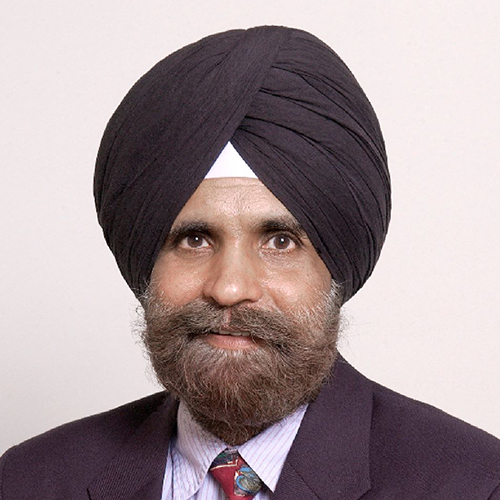
Professor Tarlochan Sidhu
Department of Electrical, Computer and Software Engineering, Ontario Tech University, Oshawa, Canada
Keynote: Smart Grids and AI: The Power Couple We Deserve?
Bio
Dr. Tarlochan Sidhu holds a B.E. (Hons.) from Thapar Institute of Engineering, India, and M.Sc. and Ph.D. degrees from the University of Saskatchewan, Canada. From 1990 to 2002, he was a Professor and Graduate Chair at the University of Saskatchewan’s Department of Electrical Engineering. He then served as Professor and Chair of the Electrical and Computer Engineering Department at the University of Western Ontario until 2011, where he also held the NSERC/Hydro One Networks Senior Industrial Research Chair in Power Systems Engineering. Since 2012, Dr. Sidhu has been a Professor at Ontario Tech University, where he was Dean of the Faculty of Engineering and Applied Science from 2012-2020. Dr. Sidhu has published over 300 papers, holds several international patents, delivered numerous invited talks, and provided consulting services to power industries worldwide. A recognized expert in smart grids, substation automation, and microgrids, he has supervised more than 50 Ph.D.s, Master’s, and post-doctoral students. He has contributed technical leadership to international working groups, including IEEE’s Power System Relaying Committee (PSRC) and CIGRE (France), and has helped develop international standards and guides for smart grids and substation automation. His contributions have earned him multiple awards, including the IEEE PSRC Distinguished Service Award in 2011. Dr. Sidhu is the Founding Editor-in-Chief of the International Journal of Emerging Electric Power Systems. He has served on the editorial boards of journals such as IEEE Transactions on Power Delivery and Electric Power Systems Research. He is a Fellow of several prestigious institutions, including the IEEE, the IET (U.K.), and the Canadian Academy of Engineering, and is a Registered Professional Engineer in the Province of Ontario and a Chartered Engineer in the U.K.
Abstract
The quest for sustainable energy and decarbonization has pushed modern power systems to their limits, demanding smarter, more adaptable solutions. Enter artificial intelligence (AI), the flashy new partner to traditional power grids. With its perceived ability to optimize operations, forecast demand, manage distributed energy resources, and enhance system efficiency, AI promises to transform smart grids into something truly revolutionary. But every power couple has its issues. Critics question the scalability, reliability, and long-term feasibility of AI-driven solutions, while ethical and operational concerns cast a shadow over its deployment. This talk will explore whether AI and smart grids are truly the power couple we deserve or just another mismatched duo. Drawing on insights from three research projects, we will dive into the real-world applications of AI, including its role in grid protection, cybersecurity, and asset management. While the results highlight AI’s potential to boost smart grids, they also reveal the hurdles that must be overcome for this partnership to truly shine. Are AI and smart grids a match made in technological heaven or just a transitory spark? Let us find out.
2:15 PM – 3:00 PM
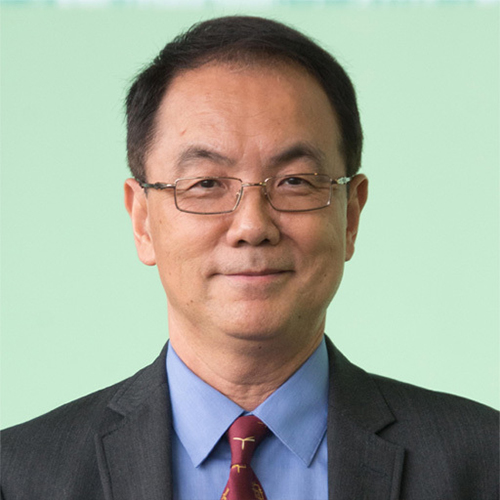
Dr. Don Tan
IEEE Technical Activities Vice President-Elect 2025, founding President of IEEE Transportation Electrification Council, Chair of IEEE Fellow Advisory and Oversight Subcommittee, and Vice Chair of IEEE Industry Engagement Committee
Keynote: Ultra-fast charging and ubiquitous infrastructure
Bio
Dr. Tan earned his PhD from Caltech. He is a member of the National Academy of Engineering and a fellow of the IEEE. He has served as Distinguished Engineer, Fellow, Chief Engineer-Power Conversion, Program Manager, Department Manager, and Center Director in a US Fortune 500 corporation. Unusually prolific as a visionary technical leader in ultra-efficient power conversion and electronic energy systems, Dr. Tan has pioneered breakthrough innovations with numerous high-impact industry firsts and record performances that received commendations from the highest level of US Government. He has developed hundreds of designs and thousands of hardware units deployed for space applications without a single on-orbit failure. His suite of world-class electronics performed flawlessly on the James Webb Space Telescope (JWST), located one million miles away, achieving world-record-breaking performances.
Dr. Tan is the IEEE Technical Activities Vice President-Elect 2025, founding President of IEEE Transportation Electrification Council, Chair of IEEE Fellow Advisory and Oversight Subcommittee, and Vice Chair of IEEE Industry Engagement Committee. Among numerous others, Don has served as Division II Director, IEEE Board of Directors; Fellow Committee Chair, IEEE PELS/PES eGrid Steering Committee Chair, PELS Long Range Planning Committee Chair, Nomination Committee Chair, PELS President, Editor-in-Chief (Founding) for IEEE Journal of Emerging and Selected Topics in Power Electronics, APEC (the fourth largest event in IEEE) General Chair, PELS Vice President-Operations, Guest Editor-in-Chief for IEEE Transactions on Power Electronics and IEEE Transactions on Industry Applications, Fellow Committee, PELS Vice President-Meetings, IEEE Chair for IEEE/Google Little Box Challenge (awarded $1M cash prize), and IEEE/DoD Working Group Chair, developed IEEE/ANSI standards 1515/1573. Don has delivered about 130 keynotes/invited global presentations. He has received more than $30M+ external customer funding for research and technology development. He also serves on many prestigious national and international award, review and selection committees.
Abstract
As the EV technology for the driving train entered the phase of maturity with many superior performances, significant progress in battery technologies ushed in the era of electrical vehicle proliferation. Battery-powered electric vehicles (BEV) are now in price parity with internal combustion engine (ICE) cars, even being more competitive. Many countries/regions now have aggressive mandates towards zero-emission to combat global climate change. A major remaining obstacle is the availability of ultra-fast charging required for long-haul driving and ubiquitous charging structure for everyday driving. We will discuss the challenges facing ultra-fast charging and available solutions coming on the horizon. We will provide a new thinking in achieving ubiquitous charging infrastructure by leveraging existing and readily-available technologies. For autonomous vehicles, wireless power charging provides a path forward. The newly-founded IEEE Transportation Electrification Council (TEC) is providing much-needed leadership in the technical space to help pushing for ubiquitous charging infrastructure on a global scale.
Sunday, June 22
8:30 AM – 9:00 AM
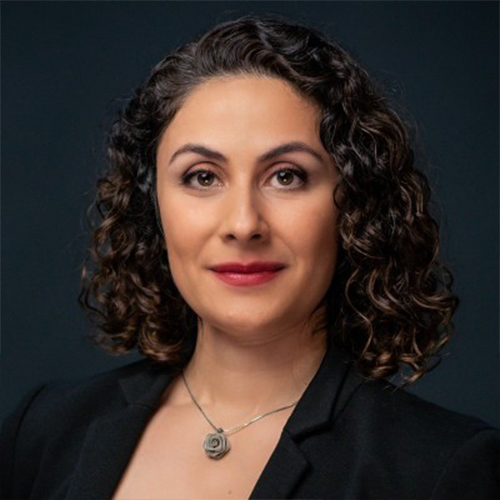
Dr. Sahar Sam
Director & Founder of Wireless PNC, Canada
Keynote: Wireless Charging for EVs Is the Future
Bio
Dr. Sahar Sam hold a B.Sc. and an M.Sc. in Materials Science and Engineering from Shiraz University and a Ph.D. in Mechanical Engineering from the University of Victoria. She has over 15 years of managerial experience in the industrial and academic environment. She also have more than 5 years of experience as an intrapreneur and entrepreneur focusing on fabricating and commercializing new technologies related to information and communication devices. She is the named inventor in 3 patents. Currently, she is the Co-Founder and Chief Scientific Officer at Solaires Entreprises Inc. on the mission to create the next generation of solar cells. She is the Director & Founder of Wireless PNC, develops and commissions wireless charging stations for e-mobility application across.
Abstract
As the world races toward electrified transportation, one critical barrier remains: the limitations of traditional EV charging infrastructure. In this keynote, we explore how wireless charging is poised to redefine the EV landscape eliminating plug-in hassles, reducing maintenance, and enabling a seamless user experience. With over 60% of urban trips under five miles and micromobility surging, the need for convenient, universal, and scalable charging solutions has never been greater. Wireless charging offers a future-proof path forward safer, faster, and more adaptable to a range of vehicles, from e-scooters to full-sized EVs. The talk will discuss the role of AI integration, smart infrastructure, and interoperable technology standards in shaping this future, as well as how wireless solutions support fleet operators, OEMs, and smart city initiatives. Further the talk will discuss cases for wireless EV charging that show this technology is not just as a convenience but as a critical enabler of global decarbonization, urban mobility, and sustainable infrastructure. Join us to discover how wireless power can drive the next leap in clean transportation.
9:00 AM – 9:30 AM

Dr. Sooky Winkler
Program Director of the e-Auto Challenge Program at the National Research Council, Canada
Keynote: Critical Minerals and Their Implications on New EV Products
Bio
Dr. Sooky Winkler is the Program Director of the e-Auto Challenge Program at the National Research Council of Canada. She is a licensed Professional Engineer in Ontario and holds a Ph.D. in Materials Science and Engineering from Imperial College London, UK.
Dr. Winkler has over 25 years of strategic leadership experience in the development and commercialization of advanced technologies, with a strong background in partnership and stakeholder management in the automotive sector. Her 14-year career at Dana Inc., a global Tier 1 Automotive company included Global Head of Advanced Materials & Process Engineering, where she shaped strategies for next-generation EV products and led sustainability initiatives with academia, government and industry. Before joining the NRC, Dr. Winkler worked at Innovations, Science and Development Canada (ISED) as a Senior Innovation Advisor helping Canadian SMEs grow their business domestically and internationally with her expertise. She is passionate about sustainable business innovation and HQP development; and has served on the Board of Directors of technology accelerator REMAP and as Adjunct Professor at the Universities of New Brunswick and Waterloo.
Abstract
Critical minerals are essential for many growing energy technologies – from wind turbines, electrical networks and electric vehicles (EVs). More specifically, elements such as lithium, cobalt, nickel, manganese and graphite are necessary for the manufacture of EV batteries, while REEs are crucial for the manufacture of permanent magnets used in EV motors. Geopolitical tensions, shortages and price volatility in these materials could hinder the production of these critical EV components and negatively impact the mass adoption of EVs. Hence, to mitigate these risks, diversification into alternative materials and processes is needed to develop new EVs technologies with reduced or no critical minerals.
Monday, June 23
8:30 AM – 9:00 AM
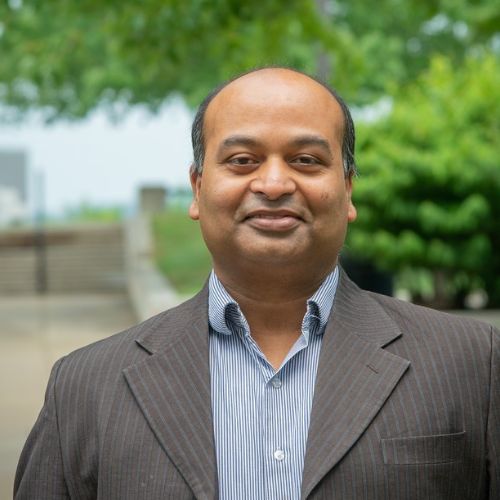
Dr. Anurag K Srivastava
Senior Scientist, Pacific Northwest National Lab, Richland, WA
Director, Smart Grid REsiliency and Analytics Lab (SG-REAL), West Virginia University, Morgantown, WV, USA
Keynote: Power at the Edge: Orchestrating Grid Resilience and Control Architectures
Bio
Anurag K. Srivastava holds the Raymond J. Lane Professorship and serves as Chairperson of the Computer Science and Electrical Engineering Department at West Virginia University. Additionally, he is an adjunct professor at Washington State University and a senior scientist at the Pacific Northwest National Lab. He earned his Ph.D. in electrical engineering from the Illinois Institute of Technology in 2005. Dr. Srivastava’s research focuses on data-driven algorithms and tools for cyber-resilient electric energy systems. His impactful research projects have resulted in the implementation of tools at utility control centers, supported by over $66M in funding from entities such as the US Department of Energy, National Science Foundation, Siemens Corporate Research, Electric Power Research Institute, Schweitzer Engineering Lab, Power System Engineering Research Center, Office of Naval Research, and various National Labs. Over the years, he has held visiting positions at organizations including Réseau de transport d´électricité in France, RWTH Aachen University in Germany, PEAK Reliability Coordinator, Idaho National Laboratory, PJM Interconnection, Schweitzer Engineering Lab (SEL), GE Grid Solutions, Massachusetts Institute of Technology, and Mississippi State University. He is an IEEE Fellow, member of several CIGRE Working Groups (WGs), leading multiple IEEE technical subcommittee, WGs (Power System Operation, Resiliency, Microgrid, voltage stability, distributed optimization), and the author of over 400 technical publications, 3 books, and 3 patents.
Abstract
The modern power grid faces unprecedented challenges as climate extremes and cyber threats test its limits, driving the need for more resilient systems. Power electronics-based devices at the edge—including Electric Vehicles (EVs), Inverter based Distributed Resources (IBRs), and industrial assets—have emerged as critical elements in this resilience equation. While industrial automation represents one important application, these technologies are fundamentally reshaping our entire approach to grid resilience. The proliferation of these resources creates a fundamental control challenge: centralized approaches provide system-wide coordination but may lack the speed needed during disruptions, while distributed control enables rapid response but risks fragmentation of grid objectives. This talk will demonstrate how strategically deployed power electronics-interfaced edge resources can provide essential services during extreme events. We’ll examine how IBRs provide voltage support during wildfire-induced system constraints, how EV fleets can offer mobile power resources during hurricane recovery, and how industrial microgrids maintain essential services during widespread outages. The future grid requires not just advanced devices but sophisticated orchestration—blending centralized intelligence with distributed responsiveness to create truly resilient power systems.
9:00 AM – 9:30 AM
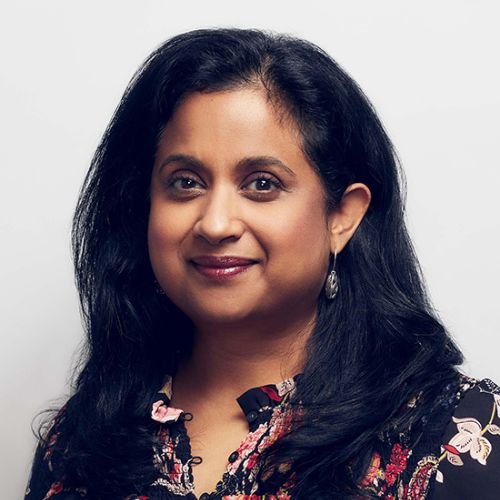
Professor Deepa Kundur
Professor & Chair of The Edward S. Rogers Sr. Department of Electrical & Computer Engineering, The University of Toronto
Keynote:Energizing Security: Innovations for Safeguarding Industrial Power Systems
- (416) 978-7300
- dkundur@ece.utoronto.ca
- http://www.comm.utoronto.ca/~dkundur/
Bio
Deepa Kundur is Professor & Chair of The Edward S. Rogers Sr. Department of Electrical & Computer Engineering at the University of Toronto. A native of Toronto, Canada, she received the BASc, MASc, and PhD degrees all in Electrical and Computer Engineering in 1993, 1995, and 1999, respectively, from the University of Toronto.
Professor Kundur’s research interests lie at the interface of cybersecurity, signal processing and complex dynamical networks. She is an author of over 200 journal and conference papers. Professor Kundur has participated on several editorial boards and currently serves on the Advisory Board of IEEE Spectrum. She has served in numerous conference executive organization roles including as General Chair of the 2018 GlobalSIP Symposium on Information Processing, Learning and Optimization for Smart Energy Infrastructures, TPC Co-Chair for IEEE SmartGridComm 2018. Symposium Co-Chair for the Communications for the Smart Grid Track of ICC 2017, General Chair for the Workshop on Communications, Computation and Control for Resilient Smart Energy Systems at ACM e-Energy 2016, General Chair for the Workshop on Cyber-Physical Smart Grid Security and Resilience at Globecom 2016, General Chair for the Symposium on Signal and Information Processing for Smart Grid Infrastructures at GlobalSIP 2016, General Chair for the 2015 International Conference on Smart Grids for Smart Cities, General Chair for the 2015 Smart Grid Resilience (SGR) Workshop at IEEE GLOBECOM 2015 and General Chair for the IEEE GlobalSIP’15 Symposium on Signal and Information Processing for Optimizing Future Energy Systems.
Professor Kundur’s research has received best paper recognitions at numerous venues including the 2015 IEEE Smart Grid Communications Conference, the 2015 IEEE Electrical Power and Energy Conference, the 2012 IEEE Canadian Conference on Electrical & Computer Engineering, the 2011 Cyber Security and Information Intelligence Research Workshop and the 2008 IEEE INFOCOM Workshop on Mission Critical Networks. She has also been the recipient of teaching awards at both the University of Toronto and Texas A&M University. She is a Fellow of the IEEE, a Fellow of the Canadian Academy of Engineering, and a Senior Fellow of Massey College.
Memberships/Awards
- Senior Fellow, Massey College (2019) elected from prominent representatives of both academic and professional interests at the University of Toronto to participate in Massey College activities.
- Fellow, Canadian Academy of Engineering (2016) for path-breaking engineering research at the interface of information processing and cyber security.
- IEEE Electrical Power and Energy Conference Best Paper Award (2015) for paper entitled “An Evolutionary Game Approach to Predict Demand Response from Real-Time Pricing” by Lee and Kundur.
- IEEE Smart Grid Communications Conference Best paper award (2015) for paper entitled “A Systematic Approach to Delay-Adaptive Control Design for Smart Grids” by Farraj, Hammad and Kundur.
- Elevation to IEEE Fellow (2015) for contributions to signal processing techniques for multimedia and cyber security.
- Best student paper award finalist (2012) at the 25th IEEE Canadian Conference on Electrical & Computer Engineering for paper entitled “On the Use of Cyber-Physical Hierarchy for Smart Grid Security and Efficient Control”; role: faculty co-author.
- First Place Best Paper Award (2011) at the 7th Cyber Security and Information Intelligence Research Workshop published by ACM for paper entitled “A Class of Cyber-Physical Switching Attacks for Power System Disruption.”
- Best Paper Award Finalist (2008) at IEEE INFOCOM Workshop on Mission Critical Networks for paper entitled “A Secure Integrated Routing and Localization Scheme for Broadband Mission Critical Networks”.
- Outstanding Professor Award (2007) awarded by the Department of Electrical and Computer Engineering, Texas A&M University.
- Association of Former Student’s Distinguished Achievement Award – College Level for Teaching (2006) presented by The Association of Former Students, Texas A&M University, for outstanding service to faculty, staff and students; this prominent award is one of the most coveted recognitions that can be bestowed upon a faculty member of Texas A&M University.
- Tenneco Meritorious Teaching Award (2005) presented by the Dwight Look College of Engineering at Texas A&M University, for excellence in instruction, dedication to students, and outstanding commitment to engineering education at Texas A&M University.
- Best Electrical Engineering Professor Award (Spring-term) (2002) given by the ECE Club (ECE Department undergraduate students) at the University of Toronto, by popular vote.
- Gordon Slemon Teaching of Design Award (2002) awarded by the ECE Department, University of Toronto, for excellence in teaching and design project supervision.
- Infrastructure Award (2001) awarded by Canada Foundation for Innovation (CFI) and Ontario Innovation Trust (OIT).
- University of Toronto Fellowship (1997-1999) awarded by the ECE Department, University of Toronto for doctoral studies.
- NSERC PGS B Scholarship (1995-1997) awarded by the Natural Sciences and Engineering Research Council of Canada for the first and second years of doctoral studies.
- NSERC PGS A Scholarship (1993-1995) awarded by the Natural Sciences and Engineering Research Council of Canada for the first and second years of masters studies.
- Department of Electrical and Computer Engineering Teaching Assistant Award (1995) presented by the undergraduate students of the Department for excellence in teaching.
- Edward S. “Ted” Rogers Fellowship (1993) for academic excellence by a graduate student in the Communications Group at the University of Toronto.
- A Governor General’s Academic Medals Program Certificate (1993) for exceptional academic performance in an undergraduate degree program in Canada.
- SCIEX Industrial Scholarship (1993) in recognition of excellence in instrumentation design.
- F.C.C.P. – John Hin Chung Tsang Memorial Scholarship (1993) for graduating from Electrical Engineering undergraduate program with the highest standing in telecommunications courses at the University of Toronto.
- J. E. Reid Memorial Prize (1993) for achieving the highest aggregate percentage in the Fourth Year subjects pertaining to electronic communication at the University of Toronto.
- Andrew Alexander Kinghorn Scholarship (1990) for achieving the highest average in the first year of studies for all undergraduate Engineering programs at the University of Toronto.
- Canada Scholarship (1989-1993) awarded by the Canadian Government for academic excellence in high school and for maintaining an honours standing in university.
- J. W. Billes Open Entrance Scholarship (1989-1993) awarded by the University of Toronto for academic excellence in high school and for maintaining an honours standing in university.
- Ontario Energy Board Working Group on developing a Framework for Protecting Privacy of Personal Information and the Reliable Operation of the Smart Grid in Ontario Steering Committee, steering committee member, June 2016 – present.
- IEEE Smart Grid Communications Subcommittee of the IEEE Communications Society, steering committee, 2014.
- IEEE Multimedia Communications Technical Committee, board member, appointed, international office, September 2010-2012
- North American Electrical Reliability Corporation (NERC) Smart Grid Task Force, November 2009 – 2011
- IEEE Information Forensics and Security Technical Committee (IFS-TC), April 2008 – March 2012
- IEEE Information Forensics and Security Technical Committee chair to the Education/Tutorial Subcommittee, April 2010 – March 2012
- IEEE Multimedia Communications Technical Committee, vice-Chair of Security Interest Group, September 2005-August 2010
- IEEE Senior Member, 2003 – present
- Professional Engineers Ontario (PEO), 2000 – present
Abstract
The increasing digitalization of industrial power systems including electric grids and electric vehicle charging infrastructure has introduced new cybersecurity risks alongside operational benefits. As these systems become more interconnected and intelligent, they are increasingly exposed to sophisticated threats capable of disrupting physical operations. This keynote will examine emerging innovations for safeguarding industrial energy systems, with a focus on the importance of attack detection, and the growing role of deep learning and artificial intelligence in threat identification and response. It will also address the risks posed by adversarial machine learning, the use of honeypots for cyber deception and intelligence, and the potential of quantum machine learning to shape future defenses. Drawing on both current developments and historical context, the talk will offer perspectives on cybersecurity challenges in industrial power systems and discuss promising directions for research and practice.
10:45 AM – 11:15 AM

Majid Pahlevani
Associate Professor, Department of Electrical and Computer Engineering, Queen’s University
Keynote: Differential Geometric Methods for Power Electronics
Bio
Majid Pahlevani (Senior Member, IEEE) received the Ph.D. degree in electrical engineering from Queen’s University, Kingston, ON, Canada, in 2012. From 2008 to 2011, he collaborated with Freescale Semiconductor, Inc., where he was the Leader of a research team working on the design and implementation of the power converters for a pure electric vehicle. From 2011 to 2016, he was the Chief R&D Engineer, VP of Technology, and then, the CTO at SPARQ Systems, Inc. At SPARQ, he invented multiple innovative power circuitry and digital control techniques for SPARQ’s main product, QUAD microinverter. From 2016 to 2019, he was an Assistant Professor with the University of Calgary, Calgary, AB, Canada. He is currently an Associate Professor with the Department of Electrical and Computer Engineering, Queen’s University. He has conducted more than 20 industrial projects in renewable energy systems, energy storage systems, electric vehicles, and LED lighting. He has authored or coauthored more than 250 journal and conference proceeding papers and is the holder of 100 U.S. Patents (issued/pending).
Dr. Pahlevani is also an Associate Editor for IEEE JOURNAL OF EMERGING AND SELECTED TOPICS IN POWER ELECTRONICS and a Member of the IEEE Power Electronics Society. He was the recipient of numerous awards, such as the “Early Research Excellence Award” from Alberta, Canada, “Research Achievement Award” and multiple “Teaching Achievement Award” from the University of Calgary and Queen’s University, “Engineering and Applied Sciences Outstanding Thesis” Award from Queen’s University, “Research Excellence Award” from IEEE Canada, and “Distinguished Research Award” from the University of Calgary.
Abstract
Power electronics is the key technology for many existing and emerging applications such as renewable energy systems, electric vehicles, energy storage systems, LED lighting, telecommunication systems, etc. Power electronics technology primarily includes power electronic circuitry and control systems. Although power circuits perform the required power conversions, the control system is what is controlling the conversion. Thus, the control system is an integral part of this technology, which directly determines the system performance. Power circuits have reached some level of maturity within the last few decades, offering very high conversion efficiencies thanks to high-performance power semiconductors and highly efficient power circuit topologies. In contrast, the advancement in control systems for power electronics has only been restricted to scientific articles and traditional linear controllers are dominant in existing industrial power electronic converters for the most part. Traditional linear controllers cannot effectively deal with nonlinearities in power electronic converters. Thus, they result in suboptimal performance and minimal stability margins.
The main focus of this talk is to present new differential geometric control techniques tailored for power electronics technology. Differential geometry is the foundation of nonlinear control theory, and thus it can be used to effectively capture nonlinear behavior of power electronic converters. The proposed framework provides advanced tools to derive nonlinear models and design control techniques for power electronic converters on manifolds, where their nonlinear behavior can be fully characterized, accurate stability margins can be investigated, and optimal performance can be achieved.

Professor Praveen Jain
Department of Electrical and Computer Engineering, Queen’s University Kingston, ON, Canada
Keynote: Resonant Power Conversion in Renewable Energy Systems
Bio
Professor Praveen K. Jain (Fellow IEEE) received his M.A.Sc. and Ph.D. degrees from the University of Toronto in 1984 and 1987 respectively. He is currently a Professor of Electrical and Computer Engineering, Tier 1 Canada Research Chair in Power Electronics, and Director of the Centre for Energy and Power Electronics Research at Queen’s University. He made pioneering contributions in introducing resonant power conversion technology in telecommunications during his work at Nortel in the 1990’s. He played a key role in the design and development of high frequency power conversion equipment for the International Space Station at Canadian Astronautics in the late 1980’s. Over the last 35 years, he has made sustained contributions to the theory and practice of power electronics through his considerable consulting work with industry. He is the founder of two successful start-up companies, CHiL Semiconductor in digital power controller (acquired by International Rectifier), and SPARQ Systems in the area of photovoltaic microinverters and energy storage. He has supervised and guided over 100 graduate students, postdoctoral fellows, and power electronics engineers. He has published over 600 papers and holds over 100 patents. He is the recipient of the 2021 IEEE Medal in Power Engineering, the 2017 IEEE Canada Electric Power Medal, the 2011 IEEE William Newell Power Electronics Award, and the 2004 Engineering Medal of the Ontario Professional Engineers. He is a Fellow of the IEEE, the Royal Society of Canada, the Engineering Institute of Canada, and the Canadian Academy of Engineering.
Abstract
Renewable energy offers a viable solution to significantly reduce emissions and meet stringent climate goals. The widespread adoption of renewable energy has expanded at a steady pace due to its competitiveness with conventional sources of energy. However, there are still many technological challenges that remain related to their controllability and reliability. Power electronics is the key technology for renewable energy systems, and advances in power electronics in the last few decades have enabled this vast pool of energy to be available to mankind.
This presentation highlights some of the work that the authors have performed in the field of resonant power conversion for nearly the past 40 years. The work presented here is based on practical resonant converters developed for real products, which are currently used in the market. The main focus will be on soft-switched resonant power circuit topologies and advanced control systems, which are instrumental in high-performance and highly reliable products for renewable energy systems. Finally, the presentation will shed some light on how to transcend resonant power converters to enable renewable energy sources to directly connect to transmission systems, eliminating many power conversion stages.